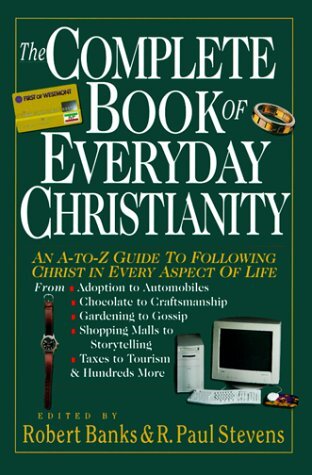Church Conflict
Book / Produced by partner of TOW
Susan M. Heitler makes the simple and clear assertion “The health of any given system, be it an individual, couple, or group, can be seen as a function of its ability to negotiate conflict” (p. 47). This statement identifies a critical concern about church life. All churches are vulnerable to conflict, perhaps especially evangelical ones because of their independence and emphasis on the individual’s personal relationship to God. Conflict itself should not be seen as spiritually bad news. It is similar to conflict in marriage. The difference between good and bad marriages, like the differences between healthy and unhealthy churches, is not the amount of conflict but the way in which it is processed. Indeed any local church that takes its mission seriously will generate all kinds of conflict; absence of conflict may be evidence of spiritual lethargy rather than health.
Nevertheless, Heitler’s statement is challenging. If the capacity to negotiate conflict is a sign of health, evangelical churches are, by and large, unhealthy. Indeed it has been argued by some that evangelicals are by nature schismatics. That may be more extreme than is justified, but there is enough truth to be taken seriously.
Learning from Secular Sources
There is much to be learned from secular sources. For example, the idea that the best solution is when both parties emerge feeling they have both won is highly desirable. Interestingly it seems often to have been Paul’s technique, the letter of Philemon being a conspicuous example. It may not always be possible to attain this, but it is a good ambition. If we love and care for our brothers and sisters in Christ, we will want to work it out in a way that everybody feels satisfied with the resolution.
Another helpful technique is a time-out. This happens when a local church debating a very contentious issue calls a meeting not to decide but to discuss. One ground rule is the avoidance of personality issues. By removing the possibility of a vote, people will be relaxed and heard. A further meeting can be held to make the decision. A variation of this is to call a meeting to brainstorm on the issue. All suggestions are listed. There is permission to include both the sublime and the ridiculous. No decision needs to be made yet.
Conflict in the New Testament Churches
The churches in the New Testament were very familiar with conflict, for example, the Corinthian church, and the classic case recorded in Acts 15. Paul and Barnabas were drawn into a serious debate over the Gentile converts who had been won to Christ during their missionary journey. The argument was ostensibly over circumcision. Some of the believers “who belonged to the party of the Pharisees stood up and said, ‘The Gentiles must be circumcised and required to obey the law of Moses’” (Acts 15:5 NRSV). This was no minor discussion. Circumcision was at the heart of Judaism. The passage speaks of “sharp dispute and debate” (Acts 15:2 NRSV) and “much discussion” (Acts 15:7 NRSV). The tone, comment and content affirm that the discussion was radical and emotional.
But it does not appear to have been personal. There was clearly lots of mud that could have been thrown. The issues were very important to the individuals debating them, to the community and to the future of Christianity. Nevertheless, there was an underlying goodwill, and they did not debate personalities. Without this and a significant willingness to hear what the Spirit had to say (Acts 15:8), no agreement could have been made.
Here was a church debate that could have been polarized ethnically, even with “biblical justification.” But they reached a unanimous conviction that transcended so many of the attitudes that divide many churches today. This classic model to resolve disputes within the local church reveals the following principles: (1) a willingness to discuss things openly and with a high degree of candor, without putting each other down or introducing personality differences; (2) a willingness to identify the issue clearly, that is, to clarify the matter under dispute; (3) a concern to understand not only what God has said but any fresh truth found in Scripture that applies to the situation; (4) a willingness to negotiate, recognizing that the compromise process does not necessarily produce an inferior Christianity.
It was obviously worth the debate because out of that discussion the whole Christian church has prospered down through the years. The whole Christian cause was liberated to reach the world for Christ. What a wonderful and constructive way to resolve conflict. It is not always so straightforward, though the lessons learned are applicable to all times.
Incidentally, Acts 15 goes on to record the clash between Paul and Barnabas over John Mark. The church seemed to have little patience with them and essentially told them to choose other partners and go about the Lord’s work. There appears to be a distinction here: personality conflict has a much lower priority, especially as this was a mission team rather than a local church. There could be no question of their being in fellowship even if they would not work together as a team in leadership. The situation was different for Euodia and Syntyche in Philippi (Phil. 4:2), two church members out of fellowship with each other.
Levels of Conflict
Another way of looking at church conflict is to determine how serious it is becoming by discerning levels of conflict. An example of level 1 conflict is disagreement over some proposal that is designed to move the church into a more active role. Not a significant amount of the church’s resources is involved. Often what is needed is clarification and a nondefensive attitude by the leadership. A more intense, level 2, conflict is a recurring issue over which strong feelings have been expressed and arguments about Scripture are advanced. A current example of this would be a debate over the role of women in the leadership of the church. A level 3 conflict has persisted with constant escalation for a period of time without resolution. An example is an ongoing debate about a charismatic style of worship in an otherwise emotionally withdrawn congregation. A level 4 conflict is one in which a significant group in the church is determined to have its way whether or not there is a church split and regardless of who gets hurt. There is no goodwill left in the system.
All of these find an example in 1 Corinthians. A level 1 conflict is manifest in 1 Cor. 16 regarding “the collection for God’s people” (1 Cor. 16:1). All Paul had to do was to clarify. Level 2 is illustrated by the debate over meat offered to idols in 1 Cor. 10:23-11:1; this debate has become more serious. The preoccupation with worship in 1 Cor. 11-14 was threatening the very existence and unity of the church and had the potential to escalate without hope of being resolved. It is a level 3 conflict. An examples of level 4 conflict forms the lead issue in 1 Corinthians: “ ‘I follow Paul’; another, ‘I follow Apollos’; another, ‘I follow Cephas’; still another, ‘I follow Christ’” (1 Cor. 1:12). A similar level of conflict is found in the debate about expelling from the fellowship the immoral brother (1 Cor. 5).
In a healthy church level 1 would almost go unnoticed. Level 2 would create vigorous debate, hard feelings and some losses depending on the ability of the leadership to hold the people together and be responsive. Level 3 would be much more difficult and would probably require some kind of outside mediation, but it is reconcilable. Level 4 in modern church life would demand outside help; it has reached the stage at which a spirit of reconciliation has been altogether lost.
A local church needs to examine the level of conflict and be willing in more serious cases to call in someone, either an individual or a team, who can help them. Paul functioned as a conflict resolver in Corinth. What one looks for in such a team is critical. Eddie Hall cautions the church:
Listening and mediation skills are great, he says, and understanding personalities and social systems is also helpful. However, skills are not enough. I once was part of a team that had excellent skills, but we couldn’t pray together. That visit produced the least satisfactory outcome of my experience with conflict-resolution teams. (p. 69)
Destructive church conflict is a spiritual issue involving spiritual warfare. It cannot and should not be processed as if the church were General Motors. It is appropriate to discipline individuals who, like Diotrephes in 3 John, are notorious and unrepentant troublemakers. A healthy church will seek the gift of discernment to know how to discipline such individuals. This too is part of conflict resolution.
Out of all of this the local church and the church universal can emerge stronger, more resolute and more effective, occasionally bloodied but focused again on its mission and, more important, focused on its Lord.
» See also: Conflict Resolution
» See also: Forgiveness
» See also: Pastoral Care
References and Resources
R. D. Bell, Biblical Models of Handling Conflict (Toronto: Welch, 1987); C. M. Cosgrive and D. D. Hatfield, Church Conflict: The Hidden Systems Behind the Fights (Nashville: Abingdon, 1994); E. Hall, “The Conciliation Calvary,” Leadership 14, no. 1 (1993) 66-72; S. M. Heitler, From Conflict to Resolution (New York: Norton, 1990).
—Roy D. Bell





